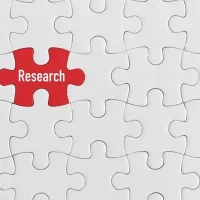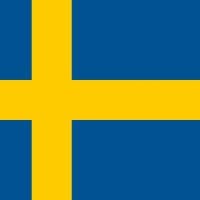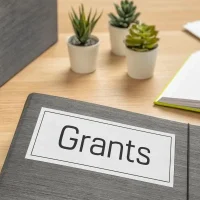Deadline: 15 April 2020
The United Nations Mine Action Service (UNMAS) supports the Directorate of Mine Action Coordination (DMAC) to coordinate the Mine Action Programme of Afghanistan (MAPA) through the United Nations Office for Project Services (UNOPS).
Objectives
- To raise awareness and promote safe behaviour towards the threats affiliated with landmines and ERW contamination among people on the move, such as returning refugees and IDPs.
- To improve the capacity of MAPA in Risk Education development, implementation and delivery.
Outcomes
- Provision of Explosive Ordnance Risk Education (EORE): To raise the level of awareness and promote safe behaviour towards the threats affiliated with landmines and ERW contamination among people on the move, such as returning refugees and IDPs, thus reducing the risk of death and injury due to explosive ordnance.
- Capacity Building: To ensure that the capacity of key MAPA partners is continually invested in across a variety of competencies that will see improvements to activities, funding levels and strategic planning in mine action, specifically EORE, in Afghanistan.
- Visibility and Advocacy: To advocate for the need for continued mine action support in Afghanistan and to document the achievements by all stakeholders.
Outputs to be funded
All activities are to be conducted in accordance with the approved Standard Operating Procedures (SoPs), International Mine Action Standards (IMAS), and Afghanistan Mine Action Standards (AMAS), and will be subject to Quality Assurance (QA) by DMAC and GSA compliance monitoring by UNMAS-AFG.
- Provision of Explosive Ordnance Risk Education (EORE):
- Output 1: Provision of Explosive Ordnance Risk Education (EORE) for the estimated number of documented returning refugee population (returnees) according to the Humanitarian Needs Overview, using teams comprising male and female instructors at three UNHCR Encashment Centres in Kabul, Kandahar and Nangarhar provinces.
- Output 2: Provision of Explosive Ordnance Risk Education (EORE) for the estimated number of undocumented returning population (returnees) and deportees according to the Humanitarian Needs Overview, using teams comprising male and female instructors at six IOM Zero Point and/or Transit Centers located in Nangarhar, Kandahar, Herat and Nimroz Provinces.
- Output 3: Pre- and post-testing on a sample of beneficiaries is required in order to document knowledge retention and behavior characteristics, for the improvement of materials and approaches in the future.
- Output 4: Provision of Explosive Ordnance Risk Education (EORE) to alternative communities to efficiently manage resources during border/centre closures or low rates of return. Activities will target IDPs using teams comprising male and female instructors in Kandahar, Nimroz, Herat, Nangarhar and Kabul.
- Capacity Building:
- Output 1: Build the capacity of existing MAPA partners, specifically on EORE, through activities such as training, mentoring or developing new EORE materials and methods to measure knowledge retention and impact.
- Visibility and Advocacy:
- Output 1: Provision of three (3) high quality photos per Milestone Report of Activities 1.1-1.4 and 2.1 with UNMAS branding visible for advocacy purposes.
- Output 2: Assistance in facilitating access for UNMAS’ externally procured photographers in a timely manner.
- Output 3: Assistance in facilitating access for external media operators coordinated by UNMAS and notification of any additional, bilaterally coordinated, media events/pieces.
Note:
- The project should include an internal female QA to carry out QA of female sessions provided, as required.
- Standard MAPA risk education materials, including hotline cards, will be provided by DMAC/ UNMAS Afghanistan.
- It is envisaged that at some border points the rates of returns and processing facilities will alter the time and space available for risk education; thus, different approaches for each transit centre/zero point/encashment centre should be considered, based on localized knowledge.
- Applicants must refer to the Humanitarian Needs Overview of 2020 and amend or alter as they see fit. Applicants are encouraged to include ample resources to implement.
- UNMAS Afghanistan will provide visibility materials and these materials must be returned to UNMAS Afghanistan, unless agreed upon by UNMAS Afghanistan and the Grantee.
- The optimal photo size for the photograph size is 4200×2800 Megapixels.
Eligibility Criteria
- Grant applications shall only be accepted from national and international not-for-profit mine action non-governmental organizations (NGOs) that are registered in the Islamic Republic of Afghanistan.
- Organizations must possess accreditation for conducting Explosive Ordnance (EO) Risk Education (RE) activities from the Afghan Government Directorate of Mine Action Coordination (DMAC) to qualify for technical evaluation.
- Organizations must have the existing management, financial, administrative and technical structures to allow them to engage in the activities described in this CFP to qualify for technical evaluation.
- Grant projects must achieve a Code 2a or 2b under the Inter-Agency Standing Committee (IASC) Gender Marker tool to qualify for technical evaluation.
- Organizations must have environmental protection policies in place and Standard Operating Procedures (SOPs) that have been approved by DMAC prior to the start of grant activities to qualify for technical evaluation.
- Other critical considerations:
- Joint proposals that include sub-grant agreements to foster capacity development of the MAPA are allowed and will be considered an asset.
- Past performance, as captured by DMAC’s measuring and monitoring systems, which include a balanced scorecard, will be considered when selecting the most suitable proposal.
- Previous experience of Explosive Ordnance Risk Education (EORE) is desired, and evidence of such experience must be demonstrated in the applicant’s proposal.
- The grant activities are scheduled to begin on approximately 01 June 2020 and must be concluded by 31 March 2021. These dates are estimates only and subject to change, depending on factors that include, but are not limited to: the number, quality, and value of the received proposals (which may affect the duration of the evaluation and award stages).
For more information, visit https://www.ungm.org/Public/Notice/106424









































